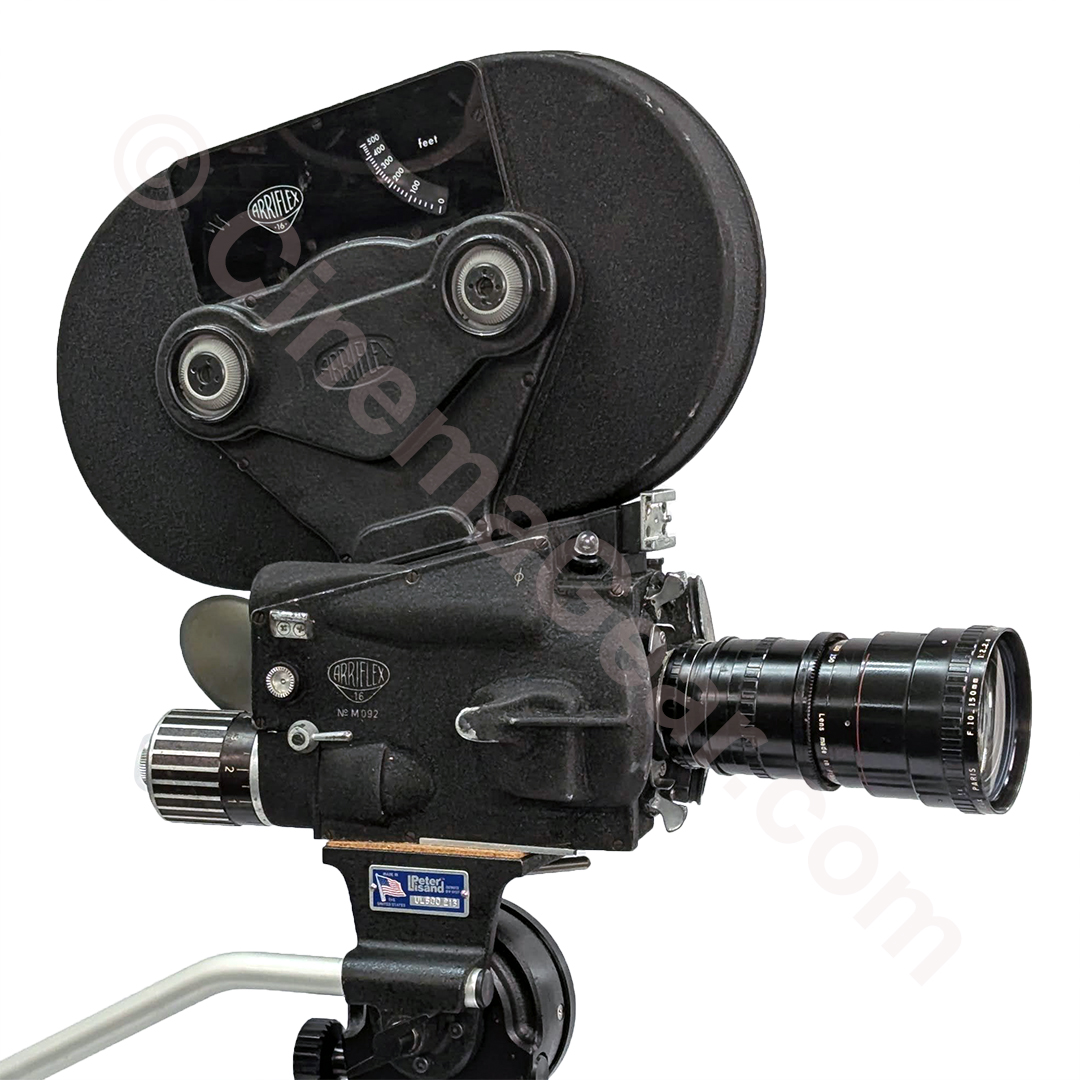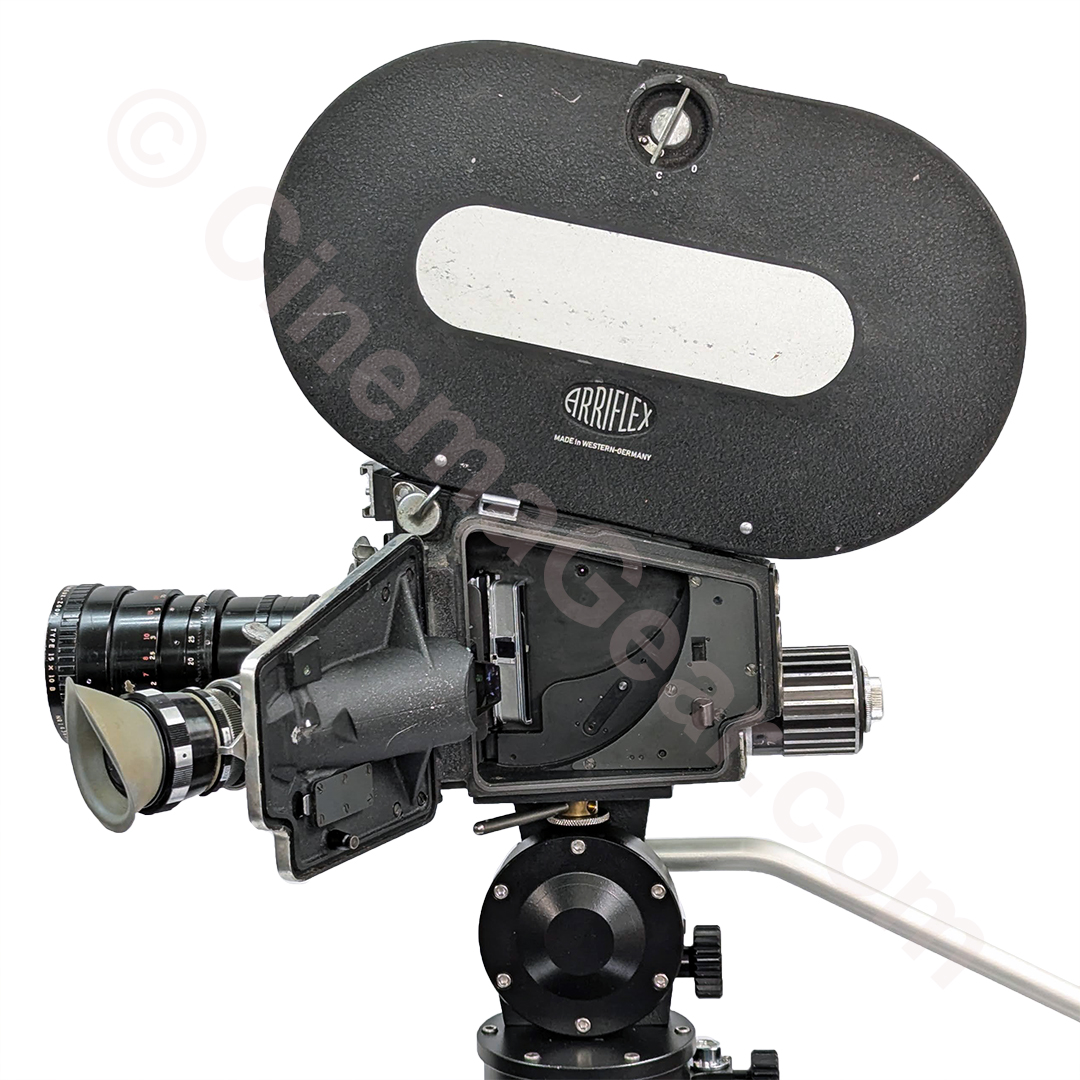
Arriflex M

$3,700
Item #C14205
This Arriflex 16 M camera is offered as pictured with a all-aluminum Peter Lisand tripod and ultra smooth Peter Lisand fluid head. It also comes complete with a second 400' magazine, an Angenieux 10-150mm zoom lens, and a variable speed motor. The camera was serviced and run with 200' of film and is in good working condition.
The Arriflex 16M "Magazine" camera was introduced in 1962 as a successor to the venerable ARRI 16 ST. Like its predecessor the ARRI ST, the ARRI M is a pin registered, spinning mirror reflex 16mm motion picture camera with a bright viewfinder, a 3-lens divergent turret to work with a variety of lenses, and a small, compact formfactor. The M improved upon the ST by adding interchangeable ground glasses, a brighter viewfinder image, an easy to open and close hinged camera door, and easier to use, gear-driven, interchangeable magazines in 3 capacities (200', 400', 1200'). This ARRI M also features a built-in Pilotone generator. Arriflex listened to feedback from its many happy ARRI ST customers in designing the ARRI M, and built upon the ARRI ST's reliable pin registered movement and spinning mirror reflex viewfinder to developed this innovative, next generation 16mm production camera.
Photo Gallery:
A Brief History of ARRI
ARRI was founded by August Arnold and Robert Richter in Munich, Germany in 1917. Friends from school, Arnold and Richter already had some experience in the motion picture business, having worked as cameramen and lab technicians. They began their business by building a film copying machine using parts out of an old film projector they purchased secondhand. While sales of their machine were going well, both men continued their work in many aspects of the movie business, including as cinematographers, producers, and lighting technicians. In 1918, they worked on their first film with director Fred Stranz, a western called "Der Schwarze Jack" (or Black Jack).
By 1920 they were producing their own short films, and using the profits to improve their printers. In 1924, Arnold began designing their first motion picture camera, the KINARRI 35, as well as their first lighting equipment. This camera was completed by 1925 and Arnold sent it to Richter in the United States where he had gone to learn about the American film business. Their second camera, the TROPEN, which featured an adjustable rotary shutter, was produced during this time as well. In 1928, the KINARRI 16 was developed for an amateur filmmaking audience, along with a 2nd more advanced model that featured an internal spring wind mechanism. In 1934, with sound films now dominating the market, ARRI developed a portable sound camera, but patent issues prevented it from being sold commercially. Success came soon after though.
In 1937, the ARRIFLEX 35 was released, a revolutionary handheld spinning mirror reflex 35mm motion picture camera that featured a spinning mirrored shutter and a parallax-free erect image viewfinder. This design, which saw many innovations and updates after its introduction, was produced until 1978. The Arriflex 35 is a World War II vintage camera, and saw use by the German military during the war. Some early examples of the ARRI 35 were captured by American troops and brought back to the US. In 1946, ARRI introduced the next generation of this camera, the Arriflex 35 II. So influential was the Arriflex 35 series of cameras, that it was awarded an Academy Award of Merit in 1983 for "the concept and engineering of the first operational 35mm, hand-held, spinning mirror reflex, motion picture camera."
Sources:
- "The New Arriflex 16M", Advertising brochure.
- "Technical Information: Mirror Reflex Motion Picture Camera ARRIFLEX 16M for 16mm Film", Advertising brochure, (November 1964).
- Jon Fauer, "The History of ARRI in a Century of Cinema", ARRI, updated 2021, View source.
- "100 Years Inspiring Your Vision", updated 2017, View source.
- Jorge Diaz-Amador, "Camera Profiles - Arriflex 35-II Series," updated 2020, View source.
- Jan Heugel, Arnold & Richter Cine Technik GmbH & Co. Betriebs KG, email message to owner, November 12, 2019.






